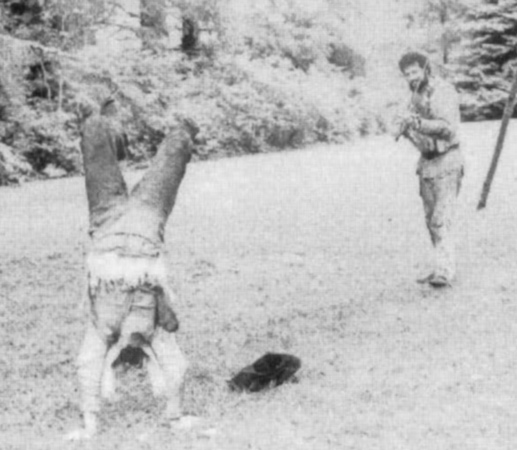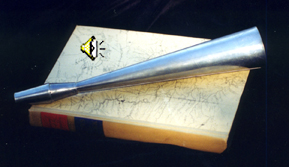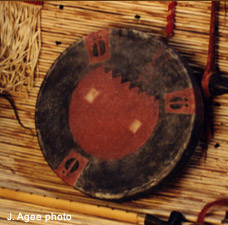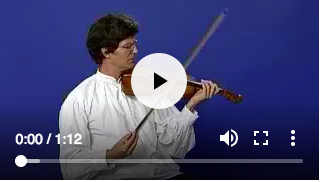The journals of the Lewis and Clark expedition contain references to some two dozen occasions when the men turned to music for recreation and to celebrate holidays. It also served an important function in some of their diplomatic negotiations with Indian tribes.
Songs They Sang
by Joseph A. MussulmanIn response to numerous requests from teachers and community musicians, we present the following lists of songs that might have been sung by the men on the expedition, or by the folks back home.


Even if someone had invited him to sing them, it is probable that he as well as many of his listeners would have considered it ill-mannered if not illegal to do so.


The jolly men of Lewis and Clark danced their way into history—a fascinating look behind the “big scenes” of America’s intriguing Corps of Discovery.
Blackfeet Songs
An interview with an elder


These songs are used in honorings, giveaways, recognition of society members, and respect for veterans. Blackfeet reporter Pelah Hoyt talked with Professor of Music Joseph Mussulman about the expedition and its music.


In May of 1803, Lewis bought four “tin horns”—elsewhere called “Tin blowing Trumpets” or, by Sgt. Ordway, “Sounden [Sounding] horns.” They were likely used a signals between boats and on several occasions a horn was used to call in lost hunters.
The Tambourine
by Joseph A. Mussulman

Instruments resembling tambourines are mentioned several times in the journals, but always in descriptions of Indian music, except for Sergeant Ordway’s comment on New Year’s Day of 1805.


For more than a hundred years the American bison has been enshrined as a symbol of the American West in the first line of a song known around the world, “Home on the Range.”


On 8 June 1806, Meriwether Lewis wrote of that evening, “we had the violin played, and [we] danced for the amusement of ourselves and the Indians.” Presumably, Pierre Cruzatte was the fiddler. It was the last mention Cruzatte’s playing the violin. Why?
Jews Harps
by Joseph A. Mussulman

Although nobody can determine how this tiny musical instrument was named, we do know Lewis included them in his list of Indian gifts. Whitehouse records the merriment of the Yankton Sioux playing them and dancing.
Jefferson the Violinist
by Joseph A. Mussulman

One of Thomas Jefferson’s favorite compositions was the Sonata for Violin and Continuo, Opus 5, written by Corelli. Using a violin such as Jefferson owned, violinist Samuel Taylor plays the theme and two of the variations.


The principal catalyst for their musical diversions was undoubtedly Private Pierre Cruzatte, whose official duty was as a boatman, but who also played the fiddle.


On 7 April 1805 three ‘heroic’ events occurred. The expedition set off from Fort Mandan, and Beethoven premiered his Third Symphony, the “Eroica,” dedicated to Napoleon Bonaparte. It was also the day Great Britain and Russia sealed a fateful alliance against that French emperor.
Thrapples
by Joseph A. MussulmanOf four Yankton Sioux, Sgt. Ordway wrote: “They had each of them a Thrapple made of a fresh buffelow hide dressed white with Some Small Shot in it and a little bunch of hair tied on it.”
Experience the Lewis and Clark Trail
The Lewis and Clark Trail Experience—our sister site at lewisandclark.travel—connects the world to people and places on the Lewis and Clark Trail.
Discover More
- The Lewis and Clark Expedition: Day by Day by Gary E. Moulton (University of Nebraska Press, 2018). The story in prose, 14 May 1804–23 September 1806.
- The Lewis and Clark Journals: An American Epic of Discovery (abridged) by Gary E. Moulton (University of Nebraska Press, 2003). Selected journal excerpts, 14 May 1804–23 September 1806.
- The Lewis and Clark Journals. by Gary E. Moulton (University of Nebraska Press, 1983–2001). The complete story in 13 volumes.

